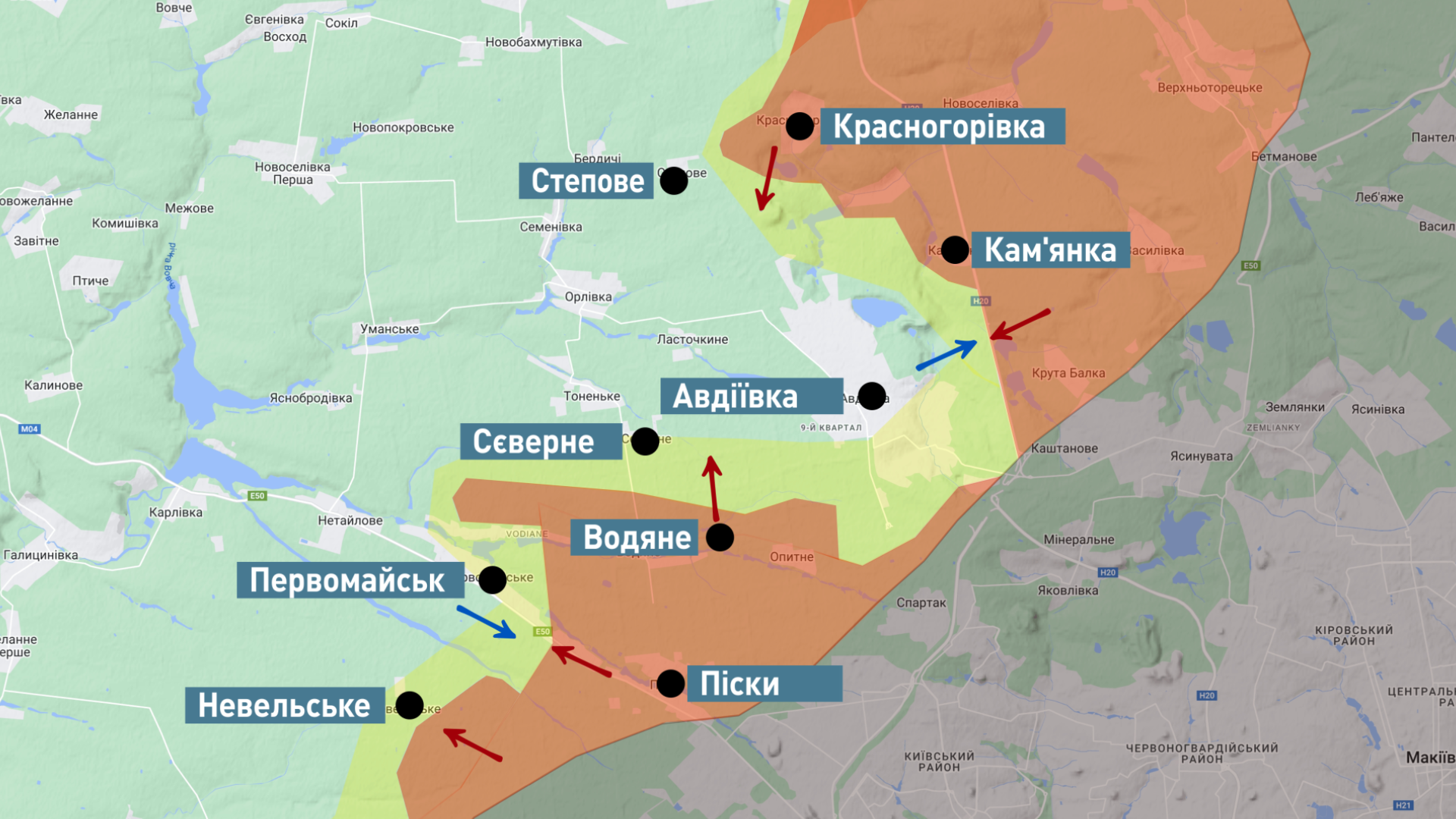
AFU gains in Bakhmut cast doubt on Russia’s ability to hold captured city areas. Military expert Serhiy Zgurets
The situation on the flanks of Bakhmut has a demoralizing effect on the enemy, but Russian forces attempt offensive actions in other directions as well
Situation in Bakhmut and around the city
Ukrainian forces are successfully encircling the enemy units from both the north and south of Bakhmut, strategically squeezing them. Supply lines have been secured through Khromove and Ivanivske, and the current objective is to establish control over the commanding heights in Berkhivka and above Klishchiivka. Despite the losses they've suffered, the Wagner PMC in Bakhmut is persistently attempting to dislodge our units from the city. The fighting in the northwestern part of Bakhmut remains extremely intense. The enemy seems to be demoralized by the situation unfolding on the flanks. The Ukrainian achievements on the northern and southern flanks of the city cast doubt on the Russian army's ability to capture new areas and maintain control over those already captured in Bakhmut.
Avdiivka direction
The Russian army's efforts are not limited to one direction. In addition to their attempts to surround Avdiivka from the north and south, they launched a missile attack on the city on May 15, resulting in civilian casualties. However, their hopes of forcing Ukrainian troops to abandon their defensive positions have been in vain.

Captain Valery Prozapas of the Armed Forces of Ukraine observed a decrease in the intensity of assaults in the Avdiivka direction. The enemy has shifted to a more defensive stance, mining approaches to their positions instead of launching direct assaults. Furthermore, Russian troop numbers have significantly decreased, and intelligence reports indicate enemy efforts to strengthen reserve lines and regroup. It is likely that they are transferring their most capable units to Bakhmut in an attempt to stabilize the situation. While Avdiivka has not been encircled, the situation remains volatile. Almost every day, nearby settlements are targeted, many of which now exist only as names on a map.
Captain Prozapas emphasized the importance of not underestimating the enemy. While some soldiers in the Russian army lack proper training and orientation on the terrain due to hasty deployments, their artillery units, staffed with more experienced personnel, understand that Ukrainian forces have an advantage in control, communication, and intelligence. As a result, the enemy is forced to distance their firepower from the front line. Their attacks are focused not on military positions but on civilian areas, targeting infrastructure and the population.
Prozapas highlighted that Avdiivka is a large city, making it challenging for the enemy to conduct a swift military operation to advance within its confines. It would require extensive preparation, which offers no strategic benefit for the Russian army. Their only option is to systematically destroy Avdiivka to maintain pressure on Ukrainian armed forces in the area. However, this approach of waging war against infrastructure and the civilian population will ultimately lead them to collapse.
UK military support to Ukraine
Great Britain continues to play a significant role in providing aid to Ukraine's Armed Forces. London was instrumental in resuming the supply of tanks and was the first to offer long-range missiles, specifically the Storm Shadow. Currently, the focus has shifted to aircraft support. On May 15, the President of Ukraine and the Prime Minister of Great Britain discussed the potential provision of Western-style fighter jets to Ukraine and the formation of a coalition of fighter aircraft. The British government's statement indicates that Great Britain will commence training Ukrainian pilots on the F-16 jets during the summer. Although the Royal Air Force doesn't operate F-16s, there are training opportunities available. A training center is expected to open by summer, and the planes will be supplied by other coalition countries. However, the consent of the United States, the manufacturer of these planes, is likely required. This development is positive news, although it arrives with a slight delay. The war is unlikely to conclude this year, and Ukraine will continue to require fighter jets in the future. It is encouraging that Britain is actively advancing this process.
New initiatives from Great Britain
And now let's discuss the weapons required. Currently, the President of Ukraine is on an extensive tour of several European countries, including Germany, Italy, France, and Great Britain. Recent news revealed that Great Britain has provided Ukraine with Storm Shadow long-range missiles, and during Volodymyr Zelenskyy's visit to London, additional initiatives from the British were announced, extending beyond just aircraft.
According to Ivan Kyrychevskyi, a Defense Express expert, the British assistance of long-range drones to Ukraine aims not only to strike targets directly on the battlefield but also to target rear facilities of the Russian army at a distance of approximately 200 km or more. The concept seems reminiscent of Ukraine’s improvised Tu-141 Stryzh development, where an aerial bomb warhead is utilized to inflict damage on enemy targets. Among the potential options from the British, one possibility is that QinetiQ company has transformed its Banshee drone family into kamikaze drones by equipping them with two engines. The mass production of such drones could utilize 3D printing technologies, and fortunately, crucial details regarding this development that could reveal its full potential remain undisclosed.
The Defense Express expert further mentioned another version of ‘kamikaze’ drones from Great Britain, known as the Fire Shadow project, which was developed by the English branch of the MBDA company in 2016. This particular drone has an operational range of approximately 100 km and is designed to neutralize vital targets that directly impact the battlefield, such as air defense systems, radars, and electronic warfare capabilities.
Kyrychevskyi concluded that if Ukraine were to acquire both the Banshee drones for strikes at a depth of 200 km and Fire Shadow for eliminating Russian air defense systems, it would be an ideal scenario. This would not only cause significant damage to the enemy's rear positions but also diminish the Russians' advantage in the electronic reconnaissance battle.
- News











































